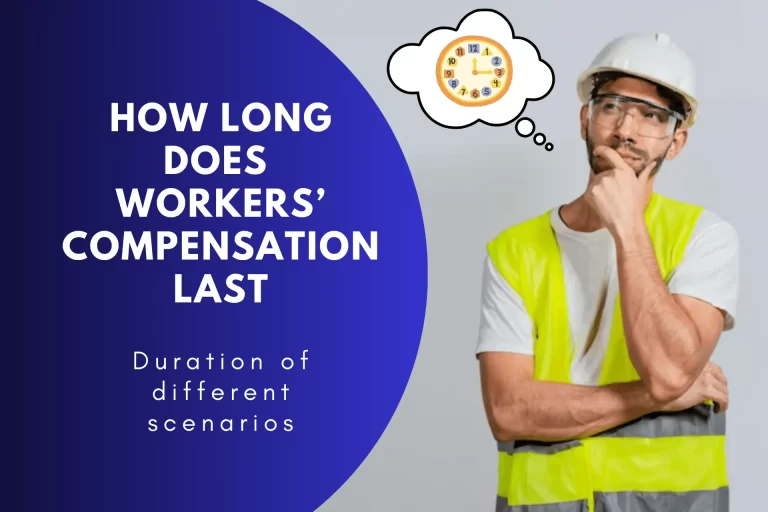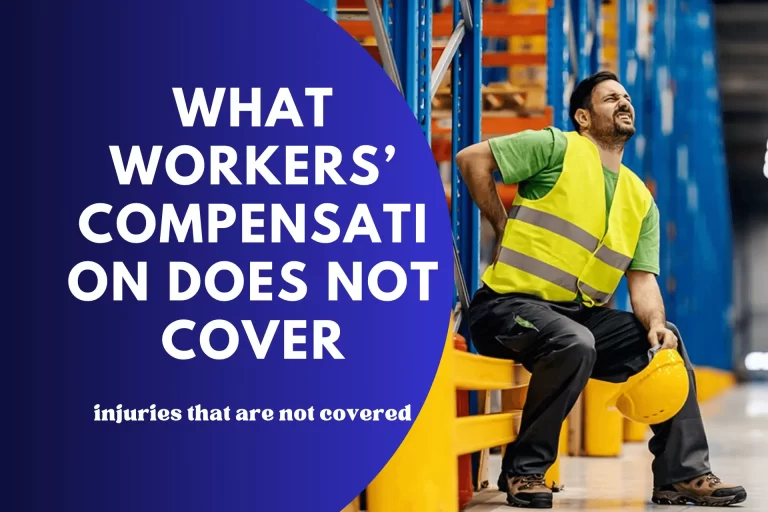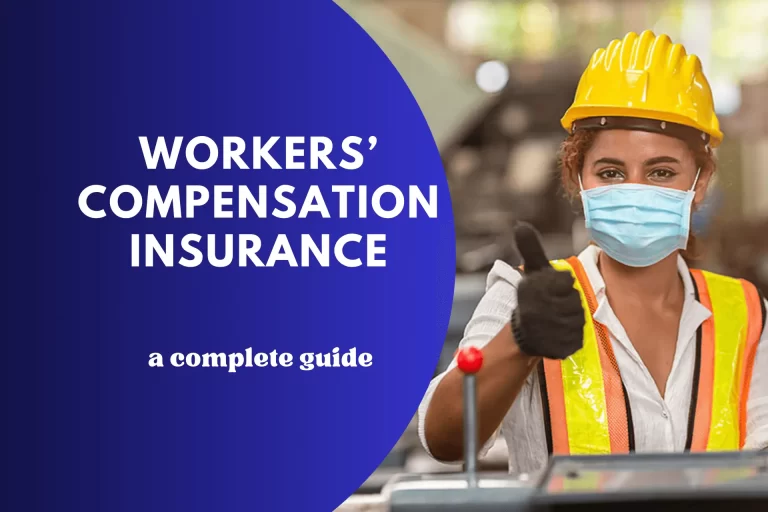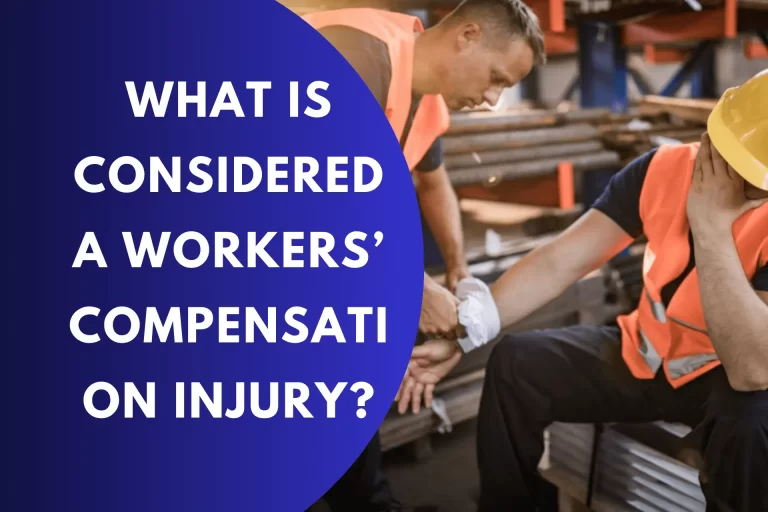7 Major Types of workers’ compensation claims | is Permanent Total Disability a type?
Workers’ compensation is a vital safety net designed to protect employees in the event of work-related injuries or illnesses. This comprehensive guide explores various types of workers’ compensation claims in detail, shedding light on the diverse injuries that can lead to a claim. Understanding these categories is essential for both employees and employers, ensuring that injured workers receive appropriate compensation while safeguarding employers from potential legal disputes.
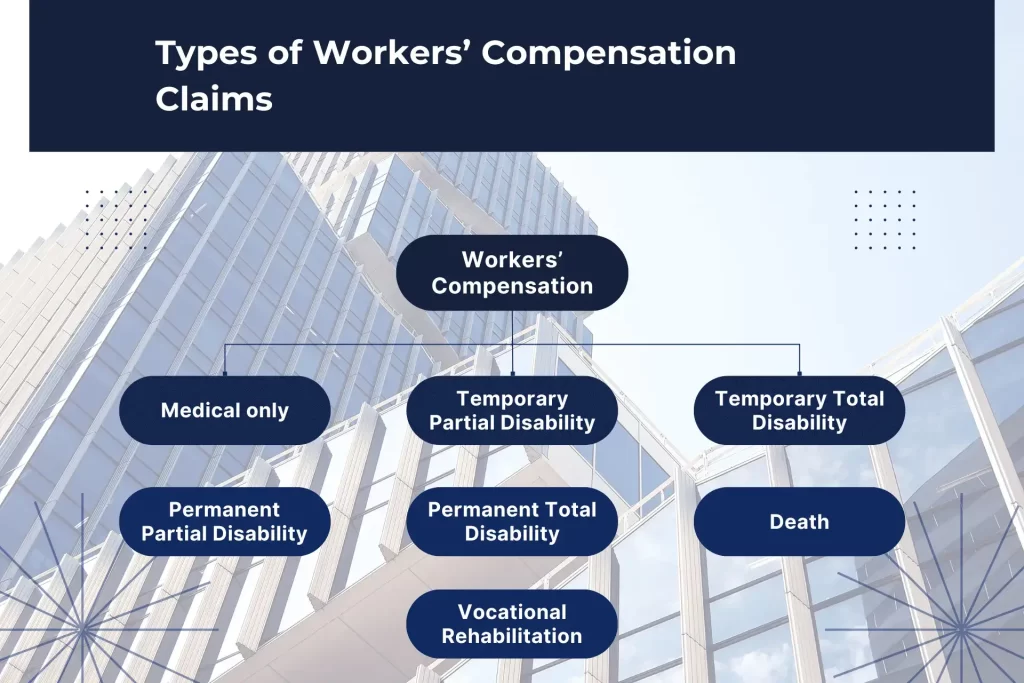
Medical-Only
Medical-Only claims are typically the least severe in Types of workers’ compensation claims. These claims involve workplace injuries or illnesses that require medical treatment but do not result in a significant loss of income for the injured employee. Medical expenses, such as doctor visits, diagnostic tests, and prescription medications, are covered under these claims. These claims are essential for ensuring that employees receive prompt medical care and recover fully.
In a Medical-Only claim, the injured worker can continue working while receiving medical treatment. This category typically encompasses minor injuries or illnesses that do not result in temporary or permanent disability. For example, if an employee sustains a minor cut while using office equipment, this may qualify as a Medical-Only claim. The employee receives medical attention to treat the wound, but their ability to perform their job is not significantly affected.
Temporary Partial Disability
Temporary Partial Disability claims come into play when an employee can return to work but cannot perform all their usual job duties due to an injury. In such cases, the injured employee may receive partial wage replacement to make up for the income lost due to the reduced work capacity. Temporary partial disability benefits help bridge the gap between the employee’s pre-injury earnings and their current earning potential.
Temporary Partial Disability claims often involve injuries that affect an employee’s ability to perform specific tasks related to their job. For instance, if a construction worker injures their hand but can still perform administrative tasks, they may be eligible for Temporary Partial Disability benefits. These benefits aim to compensate for the reduced earning capacity during the recovery period.
Temporary Total Disability
Temporary Total Disability claims involve injuries that render an employee temporarily unable to work at all. These claims provide financial support to employees who are expected to recover fully and return to work once they have healed. Benefits typically replace a portion of the employee’s lost income during the recovery period, helping them maintain financial stability during their temporary incapacity.
Temporary Total Disability claims often stem from more severe injuries that require an extended period of recovery. For example, if a factory worker sustains a back injury that necessitates several months of rehabilitation, they may qualify for Temporary Total Disability benefits. These benefits provide crucial financial support during the recovery process, allowing the injured employee to focus on healing without worrying about their income.
Permanent Partial Disability
Permanent Partial Disability claims pertain to injuries that result in permanent impairment but do not render the employee totally disabled. The severity of the impairment determines the compensation amount. Compensation is based on factors such as the type of injury, its impact on the employee’s ability to work, and the extent of permanent impairment. These claims aim to provide fair compensation for lasting physical or functional limitations.
Permanent Partial Disability claims often involve injuries that leave the employee with some level of permanent impairment or disability. For example, if a warehouse worker sustains a shoulder injury that results in limited range of motion, they may be eligible for Permanent Partial Disability benefits. These benefits acknowledge the permanent nature of the impairment and provide compensation accordingly.
Permanent Total Disability
Permanent Total Disability claims are the most severe types of workers’ compensation claims. They come into play when an injury leaves an employee permanently unable to perform any work. In such cases, the injured employee may receive compensation to replace their lost income for the rest of their life. Permanent total disability claims are designed to offer financial support and security to employees facing a lifetime of disability.
Permanent Total Disability claims are reserved for the most catastrophic injuries, such as spinal cord injuries, severe brain injuries, or multiple amputations, which result in a complete and permanent inability to work. The compensation provided under this category is intended to help the injured employee maintain their quality of life despite the life-altering nature of their injury.
Death
Death claims arise when a workplace accident results in the tragic loss of an employee’s life. In these cases, the surviving family members or dependents may be eligible for workers’ compensation benefits. These benefits can help cover funeral expenses and provide ongoing financial support for the deceased employee’s dependents.
Death claims are among the most emotionally challenging cases in the types of workers’ compensation claims. They provide essential financial assistance to the families left behind after a workplace fatality. These benefits help alleviate the financial burdens associated with the loss of a loved one and provide some measure of financial security for the surviving family members.
Vocational Rehabilitation
Vocational Rehabilitation claims focus on helping injured employees return to the workforce when their injuries prevent them from resuming their previous job roles. This category of claims may cover retraining, job placement assistance, and other services aimed at helping the injured worker acquire new skills or find suitable employment. Vocational rehabilitation aims to restore the employee’s ability to earn a livelihood despite their injury-related limitations.
Vocational Rehabilitation claims prioritize the injured employee’s long-term well-being by providing them with the tools and resources necessary to transition into a new job or career. This may include vocational training, job counseling, resume building, and assistance with job searches. The goal is to empower the injured worker to regain their independence and financial stability.
Additional types of workers’ compensation claims (if applicable)
In some regions or industries, specific cases or types of workers’ compensation claims may be relevant. These can include claims related to occupational diseases, psychological injuries, or unique circumstances not covered by the standard categories. Employers and employees should be aware of these additional categories and their specific criteria to ensure proper compensation and support.
FAQs
Conclusion
Workers’ compensation is a complex but crucial system that safeguards the well-being of employees in the event of work-related injuries or illnesses. By understanding the various types of workers’ compensation claims, both employees and employers can navigate this system more effectively. Prioritizing workplace safety and appropriate insurance coverage not only ensures that injured employees receive the support they need but also helps businesses manage their insurance costs and legal responsibilities, ultimately fostering a healthier and safer work environment for everyone involved.


